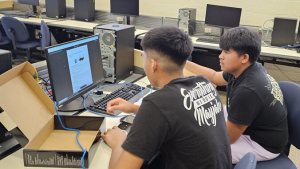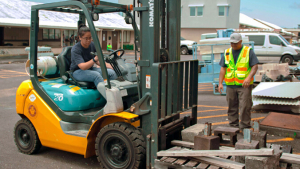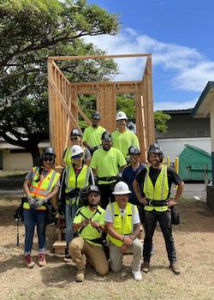
February marks Career and Technical Education (CTE) Month, a time to celebrate the programs that equip students with the skills and experiences needed to succeed in their careers. At the University of Hawaiʻi, CTE programs play a crucial role in meeting the workforce demands of Hawaiʻi’s economy.

A recent report from the Healthcare Association of Hawaii, for example, identifies 1,228 openings in the nursing professions (RN, LPN, APRN), down 11% from 2022. UH offers nursing preparation programs at Hawaiʻi, Kapiʻolani and Kauaʻi Community Colleges, and UH Maui College, UH Hilo and UH Mānoa.
Workforce development is one of the four imperatives of the UH System’s Strategic Plan for 2023-2029. Leading this charge is the systemwide Office of Workforce Development.

“This UH imperative drives my work with colleagues across the 10 UH campuses and in Hawaiʻi’s public and private sectors,” said Christine Beaule, director of workforce development. “We also work closely with Hawaiʻi P–20 Partnerships for Education, a UH office under the vice president of academic strategy that provides statewide leadership and coordination of CTE programs in the state.”
The Office of Workforce Development fosters deeper engagement between UH and employers. This includes active partnerships with the Chamber of Commerce Hawaiʻi, service on various boards and committees, and the development of sector partnerships, such as a new transportation sector initiative.
UH workforce development initiatives include:

- Internships: including a series of disciplinary meet-and-greet events for students, faculty, employers and internship hosts in the community
- A pilot of the nationwide Work+ program to build durable skills into on-campus student employment and extend the benefits of work-based learning to contexts behind internships
- Two work groups from the President’s Emerging Leaders Program designing projects to develop durable career readiness skills into internships, as well as curricula
- Helping faculty develop new micro-credentials to meet workforce needs
- Development of a framework and process to certify and recognize industry-recognized credentials and industry-valued credentials
- UH participation in all Chamber of Commerce Hawaiʻi sector partnerships, and partnerships with the State and others to develop new sector partnerships
- Disciplinary convenings that bring together academic programs with employers to identify challenges and opportunities for closer coordination so that UH graduates are prepared to meet current and future workforce needs
As UH continues to build partnerships with employers and K–12 educators, it envisions a future where every kamaʻaīna has equitable access to work-based learning and the opportunity to thrive in their careers, in the islands.

